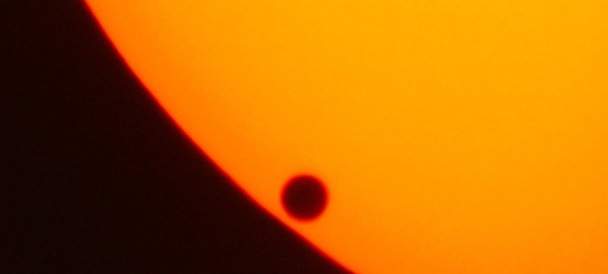Transit of Venus
There are plenty of ways to see this solar shadow play that pops up roughly twice a century.
Overview
In 1768, before swinging past Botany Bay, Captain Cook stopped in Tahiti to watch a small black dot roll across the face of the sun. This was the Transit of Venus, when our neighbour planet passes between us and the Sun. With a combination of maths, timing and observation the scientists on board were part of a worldwide effort to measure the distance between planets via a solar shadow play that pops up roughly twice a century. They come in pairs, and the sequel to 2004's is on this Wednesday, with our next scheduled service due in 2117.
Viewing-wise, the University of NSW’s outreach program looks to be a stellar bet, and Sydney University is putting on a day-long festival as well, culminating in the inevitable yet welcome arrival of Dr Karl. If rain delays play, the nearby Tin Sheds Gallery is running an exhibition on the era of radical change in exploration, colonialism and science set in motion by Cook’s transit. And if you join in from elsewhere, the Sydney Observatory has a great guide to help you watch and keep your eyes at the same time, as does ABC Science. (Who knew sunglasses weren’t enough?) Stuck at work? You can follow online via NASA, too.
The Transit runs approximately 8am-3pm. Sydney Uni events will take place on the front lawns from 10 to 3. UNSW ping pongs between the Physics Lawn and Physics Theatre from 8 to 3. Please don’t look directly at the sun (or use unfiltered magnification): your eyes are your best feature. Image by Jan Herold used under a share-alike license.





